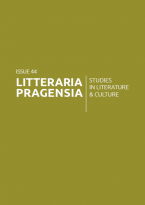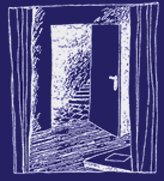
|
22.44 Neglected Irish FictionEdited by: Neil Murphy, Keith Hopper and Ondřej Pilný Volume: 22 Issue: 44 December 2012 |
Contents
|
Neil Murphy
,
Keith Hopper
,
Ondřej Pilný
Introduction
|
1 |
|
Mícheál MacCraith
Charles Henry Wilson (c. 1756-1808): An Early Anglo-Irish Novelist
show abstract
Charles Henry Wilson merits attention as the first person to publish a book of Irish Gaelic verse with English translations (1782). He followed this up with a second volume some ten years later, including three poems by the Scottish Gaelic poet Donnchadh Bàn Mac an tSaoir (1724-1812), one of which, however, is execrably translated. Wilson's second volume also included one example of genuine Ossianic Irish verse, the inclusion of this item deriving, no doubt, from the Ossianic controversy. In addition to his role as a translator, Wilson deserves consideration as an early Anglo-Irish novelist. The Irish Valet: or, Whimsical adventures of Paddy O'Haloran, published posthumously in London in 1811, is the subject of this article. Despite the author's choice of the adjective "whimsical" to describe his hero's adventures, it must be confessed that the humour often descends to an adolescent level. At the same time the novel has its serious moments, and a discussion on the priority of Ireland's claim to civilization as demonstrated by the aesthetic merits of ancient Irish music and poetry adds an important ideological dimension to the work. Interestingly, the key-phrases in this discussion echo the preface of Charlotte Brooke's famous volume Reliques of Irish Poetry (1789) a work that makes no mention of Wilson despite his being well known to the Brooke family and his pioneering role in translating Gaelic poetry. |
8 |
|
R.M. Lee
“A storehouse of strange legendary lore”: Recovering the Work of Edmund Downey
show abstract
Nineteenth-century Waterford writer Edmund Downey is perhaps better known for the role of publisher than that of author. As a publisher working in London, Downey resurrected numerous out-of-print Irish texts and reissued affordable editions of the works of better-known writers such as Sydney Owenson, Maria Edgeworth, and Gerald Griffin. It is Downey's own fiction, however, that has been too long neglected and warrants a place alongside his contemporaries in the early literary Revival. His collections of "Dan Banim" tales, particularly in the volumes Through Green Glasses (1887), From the Green Bag (1889), and Green as Grass (1892), are intriguing in terms of the burgeoning literary nationalism of mid- to late nineteenth century Ireland and offer contemporary scholars a broader view of the myriad philosophies informing the literature of the era. Downey's stories bring together elements of the folk and fairy tale, historical events, and ancient Irish legend, producing an absurd mélange of hyperbole and humour. It is precisely in the midst of this absurdity, though, that Downey intervenes in the greater conversations surrounding colonialism and nationalism, and offers a shrewd critique of the cultural nationalism touted by W.B. Yeats, Lady Gregory, and other Revivalists, thus making his writing a vital addition to any consideration of nineteenth-century Irish literary history. |
26 |
|
Ondřej Pilný
Fighting Garradrimna: Brinsley MacNamara’s The Various Lives of Marcus Igoe
show abstract
The essay purports to recover The Various Lives of Marcus Igoe (1928), a uniquely experimental novel by Brinsley MacNamara. The author's first novel, The Valley of the Squinting Windows (1918), was met with notorious hostility which determined the nature of his subsequent work as a writer of fiction. The resulting search for an adequate technique to embody a critique of rural Ireland found its peak in The Various Lives, which represents not only a resolute break with the conventions of Victorian fiction, but also a speculative alternative to the modernism of James Joyce. Above all, the novel is chiefly a serious metafictional meditation upon the adequacy of literary representation. Its meta-narrative nature prefigures the later experimentalism of Flann O'Brien and Samuel Beckett, from which it fundamentally differs, however: while O'Brien puts an emphasis on playfulness and comedy and Beckett embraces the inexpressibility of the self as a condition to be responded to by further attempts at innovative expression, MacNamara retreats back to rural realism. As a result, Marcus Igoe's life remains a failure, and his self lingers on as almost entirely void. It is argued that the reason for MacNamara's arrival at this artistic cul-de-sac is his refusal to relinquish the priority that he gave to the fight against what he saw as the philistinism of post-Revival Ireland. |
38 |
|
Michael Matthew Kaylor
“Connoisseurs of Mr Forrest Reid’s novels will know”: The Ending of Brian Westby
show abstract
Forrest Reid's 1934 novel Brian Westby - a realistic anomaly within the oeuvre of an author prized for "making the supernatural seem not only possible but actual" - chronicles how a chance encounter between a respected English novelist and an Anglo-Irish youth, both on holiday at the Ulster seaside, blossoms into a firm friendship, a friendship that alters, for both good and ill, after they discover that they are actually father and son. Although universally praised as "a gracious and memorable book," one that displays the extent to which its author is "a master of dialogue," Reid's publisher Faber & Faber, as well as several of his period reviewers, found its ending "disconcerting to the reader." Despite himself preferring the alternative ending, Reid refused to replace it for biographical reasons (all of which involved his protégé and fetish Stephen Gilbert, who served as the novel's principal inspiration and to whom it is dedicated). The jarring ending of Brian Westby and the biographical contexts that occasioned it reveal much about why Reid and his works were, still are, and will likely remain "neglected," however canonical these might appear to the few connoisseurs who consider him "the arch-priest of a minor cult." |
47 |
|
John Tangney
Encountering the Soul in Iris Murdoch’s The Black Prince
show abstract
This essay examines the concept of soul in Iris Murdoch's The Black Prince, using the theories of some alternative twentieth-century thinkers in the Platonic lineage: Jean Gebser and Carl Jung. Platonists are interested in the coexistence of incommensurable values in individuals and societies, and in our ability to evolve in ways that can't be explained by material causes, rather than in the celebration of political identities. The affront to the ego represented by the existence of different sets of values necessitates a more capacious kind of selfhood than identity. As such, Soul is an idea that is illegible within the anti-Platonic discourses that dominate academic thought in the postmodern period, and this may be the reason for Murdoch's relative neglect by academic literary criticism. It is also part of the reason why she doesn't fit neatly within the context of ‘Irish' writing despite having come from an Irish background. |
62 |
|
Keith Hopper
“A Postcard from the Homeland”: Neil Jordan’s The Past
show abstract
Neil Jordan is best known as a filmmaker, but he is also the author of five novels and a seminal collection of short stories. Much has been written about Jordan's film work, although his fiction, which is comparatively undervalued, has been less well served. One of the reasons for this neglect, I wish to suggest, is related to the cinematic texture of his prose, which is often misunderstood by literary critics. This is certainly true of Jordan's debut novel The Past, which is arguably the most narratively complex and philosophically ambitious of his literary works. This essay will outline some of the formal qualities of this "historiographic metafiction," and explore its self-conscious representation of Irish history. It will argue that Jordan's sociohistorical and political concerns are reproduced at the level of form as well as content, and that The Past, in this respect, marks a significant and original gesture in the retelling of the Irish national narrative. |
75 |
|
Roberta Gefter Wondrich
Dorothy Nelson’s Abject Families: In Night’s City and Tar and Feathers
show abstract
Dorothy Nelson's work, the two novels In Night's City (1982) and Tar and Feathers (1987), deserve renewed consideration in the context of Irish women's writing and experimental fiction of the latter twentieth century. Her concern with experimental writing is consubstantial, not merely instrumental, to her attempt at bringing forth to the public discourse the hitherto extreme, occluded theme of child and female abuse and incest as the darkest expression of the social and individual malaise in a traditionally Catholic and patriarchal context. The strained, challenging obscurity of narrative structure and style is foregrounded as a structuring principle and as the most conspicuous characteristic of her texts. Her novels, particularly In Night's City, are intensely focalized on the body as the core and unifying theme, image, source of rhetorical strategies, structuring feature and dominant semantic field. The focus on domestic and social violence and the stylistic specificities of Nelson's novels can be fruitfully examined in the light of trauma fiction, which further illuminates Nelson's role in the Irish writing of the last quarter of the twentieth century, among those writers who engage with forms of formal experimentalism while bringing controversial and hidden topics into the arena of public discourse. |
91 |
|
Neil Murphy
Dermot Healy’s A Goat’s Song: “to give some form to that which cannot be uttered”
show abstract
Situating Dermot Healy's A Goat's Song in the context of the narrative concerns of his other novels, this essay argues that a consideration of its formal structure is essential to move beyond readings that focus primarily on socio-political concerns. It suggests that some of the reasons for its relative neglect may be linked to the complex nature of its narrative, which is in turn driven by a persistent quality of refreshing strangeness in Healy's rural and small-town landscapes. Healy's work, the essay argues - via a brief consideration of his four novels before a more considered analysis of A Goat's Song - has always been consumed with the aesthetic problem of locating suitable forms to speak of the interminable fluidity of existence and the truth of minds that are frequently alien even to themselves. The novels bear overt testament to that incessant search. |
108 |
|
Annie Proulx
Dermot Healy and A Goat’s Song: A Writer’s Appreciation
|
121 |
|
Review of
Catriona Ryan
Border States in the Work of Tom Mac Intyre: A Paleo-Postmodern Perspective
Newcastle upon
Tyne: Cambridge Scholars Publishing, 2012. 260 pp.
→ Willy Maley, A Distinctive Bridging Figure |
131 |
|
Review of
Neil Murphy
,
Keith Hopper
Flann O'Brien: Centenary Essays. Special issue of The Review of Contemporary Fiction, 31.3 (Fall 2011).
Illinois:
Dalkey Archive Press. 277pp.
→ Martin Pokorný, The Apologetics Is Unnecessary: On Flann O'Brien's Unique Achievement |
134 |
|
Review of
Eamonn Jordan
Dissident Dramaturgies: Contemporary Irish Theatre
Dublin
and Portland, Oregon: Irish Academic Press, 2010. 277pp.
→ Mária Kurdi, New Paths for the Interpretation of Dramaturgy |
136 |
|
Review of
Mária Kurdi
Interfaces between Irish and European Theatre. Focus: Papers in English Literary and Cultural Studies
Pécs: Institute of English Studies, Department of English
Literatures and Cultures, University of Pécs, 2012. 144 pp.
→ Hana Pavelková, International Perspectives on Irish and European Theatre |
140 |


